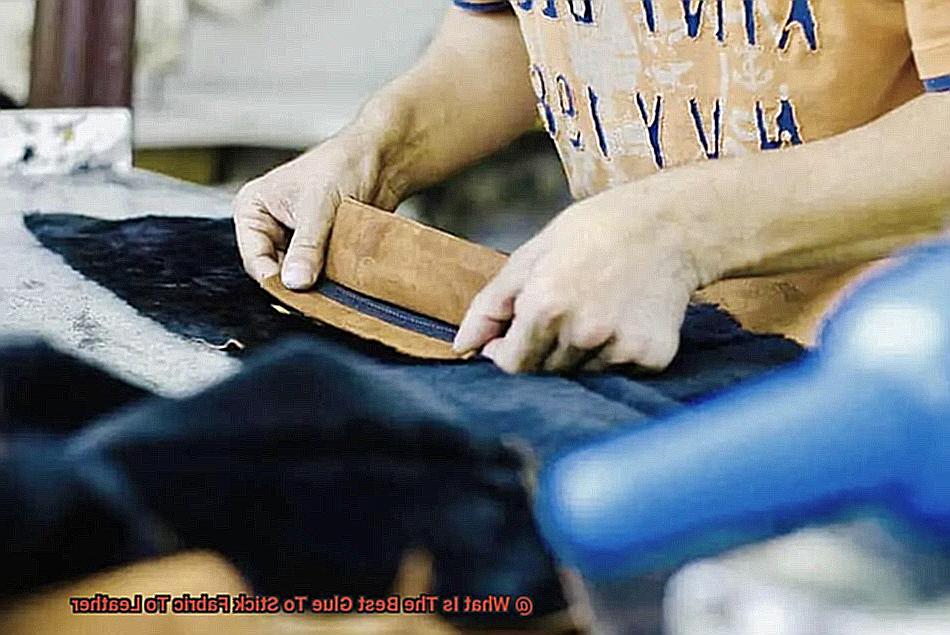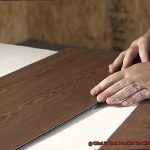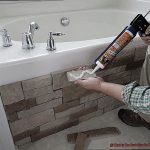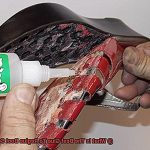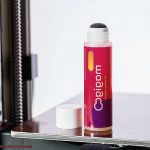Crafts and repairs involving fabric and leather can be quite the challenge. Whether you’re fixing a torn leather jacket or adding fabric embellishments to your favorite purse, choosing the right glue is crucial. But with so many options out there, how do you know which one will do the trick? In this blog post, we’ll explore different glues and their pros and cons, so you can make an informed choice for your next fabric-to-leather bonding project.
So, what are your options? From fabric glues to specialty adhesives, there’s a whole range of choices at your fingertips. Fabric glues are versatile and easy to use, forming flexible bonds that work well with lightweight fabrics. However, they may struggle to withstand constant use or wear and tear.
On the other hand, heavy-duty adhesives like epoxy or contact cement offer a more permanent solution. They can handle extreme conditions and create strong bonds for leather-to-leather or fabric-to-fabric attachments. But their rigidity might not be ideal for projects that require flexibility, like attaching fabric to leather garments or accessories.
Finding a middle ground means using multipurpose glues that balance flexibility and strength. One option worth considering is high-quality cyanoacrylate adhesive, also known as super glue or instant glue. These glues provide reliable and durable bonds for fabric-to-leather attachment. They dry quickly and have great versatility, making them popular among crafters and professionals alike.
Ultimately, the best glue for sticking fabric to leather depends on your project’s specific requirements. Consider factors like weight, flexibility, desired permanency of the bond, and materials involved. Always follow product instructions carefully for optimal results.
In upcoming posts, we’ll dive deeper into these adhesive options—discussing application techniques and offering tips for successful bonding every time. So, stay tuned and fearlessly tackle your fabric-to-leather endeavors armed with the knowledge of the best glue for the job.
Types of Glue for Bonding Fabric to Leather
Contents
- 1 Types of Glue for Bonding Fabric to Leather
- 2 Benefits of Using Fabric Glue
- 3 Advantages and Disadvantages of Contact Cement
- 4 Exploring the Strength of Epoxy Adhesive
- 5 Hot Melt Glue for Lightweight Fabrics
- 6 Spray Adhesive for Easy Repositioning
- 7 Factors to Consider When Choosing a Glue
- 8 Testing the Chosen Glue Before Use
- 9 Conclusion
Adding fabric accents to leather items can do just that. But with so many glue options available, how do you choose the right one? Don’t worry, we’ve got you covered. In this blog post, we’ll explore the advantages and considerations of various types of glue for bonding fabric to leather, ensuring your creations are not only stylish but also secure.
Fabric Glue – For a Flawless Finish:
Fabric glue is like a magic potion specially brewed for the perfect bond. This water-based adhesive dries clear, giving your projects a flawless, professional look. Plus, it’s washable, so those accidental spills won’t ruin your masterpiece. Whether you’re attaching fabric trims or patches to leather garments, fabric glue provides flexibility without compromising the integrity of the bond. It’s a must-have for projects where aesthetics and comfort are paramount.
Contact Cement – A Heavy-Duty Hero:
When it comes to sturdy bonds that can withstand rough and tumble adventures, contact cement is the undeniable champion. It forms an instant and powerful bond between fabric and leather, making it ideal for upholstery projects or repairing leather accessories. Just remember, once it’s stuck, it’s stuck for good. With contact cement, you can confidently create long-lasting masterpieces that will endure the test of time.
Epoxy Adhesive – Rock-Solid Resilience:
If you need a bond as tough as nails, epoxy adhesive is your best bet. It’s like armor for your fabric and leather combo. Epoxy provides exceptional strength and durability, making it perfect for heavy-duty applications or outdoor gear. However, be mindful of its limited flexibility. Epoxy adhesive may not be suitable for projects that require frequent movement or flexibility, as it can become brittle over time. But if you’re looking for rock-solid resilience, epoxy is the way to go.
Hot Glue Gun – Quick and Crafty:
For those quick fixes or temporary attachments, nothing beats the trusty hot glue gun. It’s super easy to use and provides an instant hold. Just beware of burns and ensure you have a high-temperature hot glue gun to tackle tougher fabrics and leathers. Hot glue may not be the most durable option for long-term bonding, but it’s perfect for those urgent fashion emergencies or temporary DIY projects.
Specialty Adhesives – Flexibility at its Finest:
If you’re working on leather clothing or accessories that require flexibility, specialty adhesives are your secret weapon. These glues are specially formulated to maintain a strong bond while allowing the fabric to move with the leather, ensuring your creations are as stylish as they are comfortable.
Benefits of Using Fabric Glue
Fabric glue is a versatile adhesive that offers a range of benefits for attaching fabric to leather. One of the main advantages of using fabric glue is its ease of use. Unlike sewing, which requires skill and time, fabric glue allows anyone to adhere fabric to leather with minimal effort. Simply apply the glue to the desired area, press the fabric onto it, and let it dry. This convenience makes fabric glue a great choice for those who are not proficient in sewing or want a quick fix.
In addition to its ease of use, fabric glue offers durability. When applied correctly, it creates a strong bond that can withstand regular wear and tear. Whether you’re repairing a torn leather garment or creating unique fabric embellishments on leather accessories, fabric glue ensures that your creations will last. Plus, many fabric glues are water-resistant or waterproof once dried, adding an extra layer of durability to the bond.
Fabric glue is also versatile in terms of the types of fabric it can bond to leather. It can be used with lightweight cotton or silk fabrics, as well as heavy-duty denim or canvas. This makes it a versatile adhesive that can be used for a wide range of projects. For example, you can use fabric glue to repair a torn leather jacket or add a pop of color and texture to a plain leather bag with fabric appliques.
Another benefit of fabric glue is its ability to provide a seamless finish. When applied correctly, the glue dries clear and becomes virtually invisible, ensuring that the bonded fabric does not stand out or detract from the overall appearance of the leather item. This is particularly important when attaching delicate or expensive fabrics to leather, as it allows for a professional-looking result.
Fabric glue also offers flexibility in terms of the type of bond it creates. It can be used to create both permanent and temporary bonds, depending on your specific needs. For permanent bonds, fabric glue offers excellent adhesion that can withstand repeated washing or dry cleaning. On the other hand, if you want a temporary bond, you can apply the glue sparingly or use removable fabric glue options.
Lastly, fabric glue is cost-effective. It is generally more affordable than purchasing sewing supplies or paying for professional sewing services. So if you’re on a tight budget or love DIY projects, fabric glue is a great option for you.
Advantages and Disadvantages of Contact Cement
If you’re searching for a reliable adhesive to bond fabric to leather, contact cement might just be your secret weapon. In this article, we will delve into the advantages and disadvantages of using contact cement in this specific application. Let’s dive in.
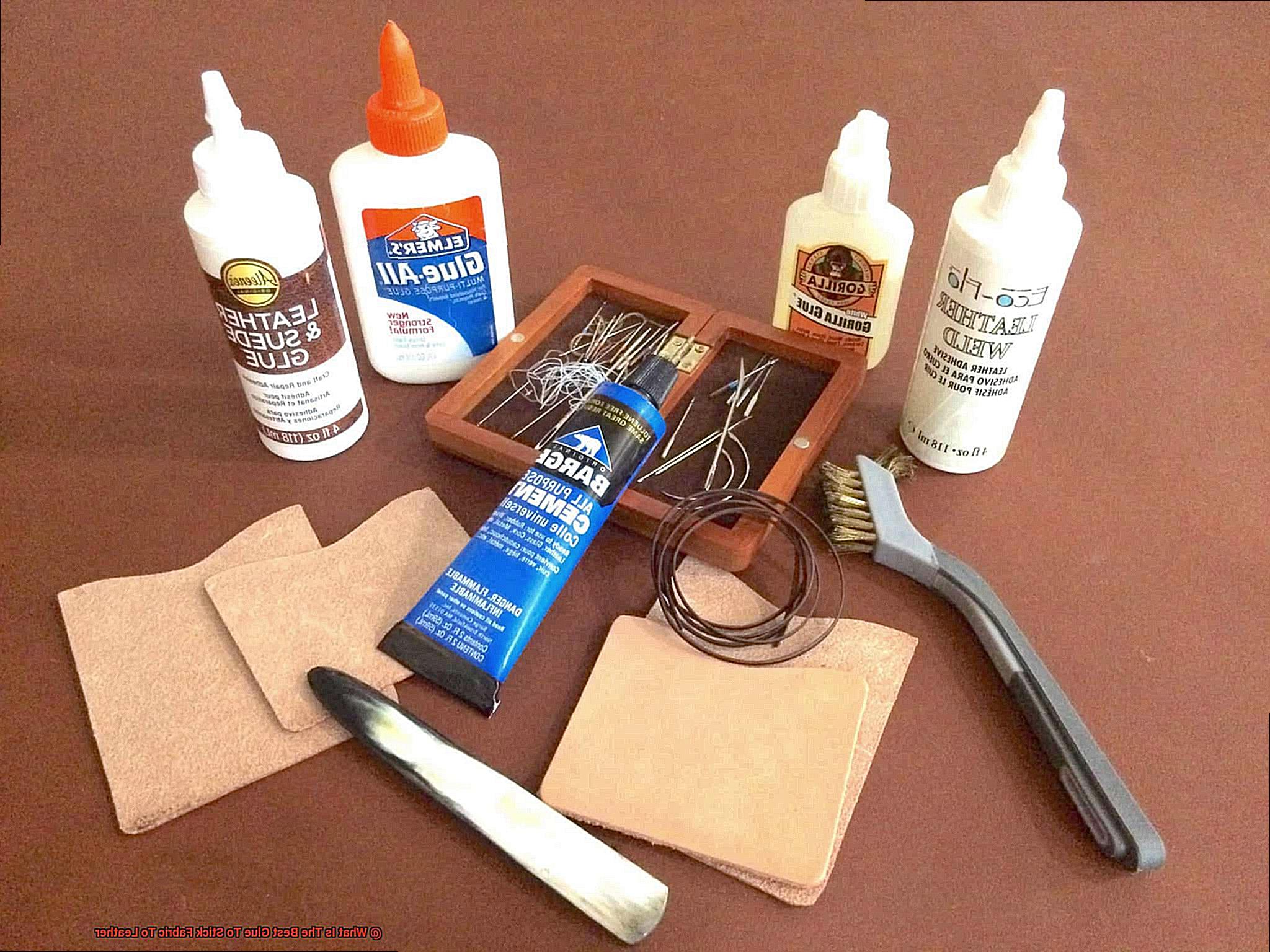
Advantages of Contact Cement:
Unyielding Bonding Strength:
Contact cement is renowned for its ability to create a robust and durable bond between fabric and leather. No matter how much stress or strain your project endures, contact cement ensures that the materials remain securely attached.
Versatile Application:
When it comes to versatility, contact cement reigns supreme. It can be used on various fabric and leather types, including cotton, polyester, nylon, suede, and genuine leather. This adhesive is a reliable choice regardless of the materials you’re working with.
Swift Drying Time:
Time is money, and contact cement understands that. Its fast drying time ensures that your project moves forward efficiently. This quick-drying feature is especially beneficial for projects that require immediate use or further processing.
Heat Resistance:
Working with fabrics and leather that may come into contact with high temperatures? No problem. Contact cement exhibits excellent heat resistance properties, allowing it to withstand heat without compromising the bond or causing material separation.
Waterproof Bond:
Need a bond that can withstand the elements? Contact cement has got you covered. It creates a waterproof seal between fabric and leather, making it suitable for outdoor upholstery or rain gear projects where moisture resistance is crucial.
Disadvantages of Contact Cement:
Pungent Odor:
One downside to contact cement is its strong and pungent odor. Working with this adhesive in enclosed spaces can be unpleasant, so proper ventilation is essential to avoid inhaling the fumes.
Limited Repositioning:
Once contact cement is applied, repositioning becomes a challenge. Its instant bond formation makes it difficult to make adjustments or correct errors during the bonding process. Precise application is key.
Short Open Time:
Open time refers to the period during which the adhesive remains tacky and allows for proper positioning before joining the surfaces together. Contact cement has a relatively short open time, demanding efficient and accurate application for optimal alignment.
Not Ideal for Thin Materials:
If you’re working with thin or delicate materials, contact cement may not be your best choice. It can create a visible and bulky bond line, affecting the aesthetic appeal of your finished project.
Potential Toxicity:
Contact cement contains solvents that can be toxic if ingested or inhaled in large amounts. Safety precautions such as using it in a well-ventilated area and avoiding direct contact with skin or eyes should always be followed.
Exploring the Strength of Epoxy Adhesive
Look no further than epoxy adhesive, the superhero of glues. With its exceptional strength and durability, epoxy adhesive is the ultimate weapon for sticking fabric to leather. Let’s dive deeper into this incredible adhesive and explore why proper surface preparation is key to achieving a bond that will withstand the test of time.
First things first, what makes epoxy adhesive so special? It’s all about that bond strength, my friend. Epoxy adhesive forms a powerful connection between fabric and leather, ensuring that your creations stay securely attached even under stress or strain. No more worrying about your favorite bag or jacket falling apart at the seams. But it doesn’t stop there.
Epoxy adhesive is like a fortress, standing strong against moisture, heat, and chemicals. Rain or shine, sweat or tears, your fabric and leather combo will remain intact. This adhesive is built to withstand tough conditions, making it perfect for all your adventurous endeavors.
Now let’s address the elephant in the room: surface preparation. Even the mightiest adhesive needs a clean canvas to work its magic. Before applying epoxy adhesive, make sure both the fabric and leather surfaces are squeaky clean. Say goodbye to dirt, grease, or any other contaminants that might hinder adhesion. Trust me, a little extra effort during surface prep will go a long way in ensuring a bond that stands the test of time.
When it’s time to apply epoxy adhesive, remember to be generous and spread it evenly on both the fabric and leather surfaces. Think of it as spreading love – every inch deserves some attention. Press them together firmly to ensure maximum contact and bonding. And now comes the waiting game. Give the epoxy adhesive enough time to cure and form that unyielding bond we’re all after.
But here’s a word of caution: once epoxy adhesive has done its job, it’s not going anywhere easily. This stuff is like a bad breakup – it’s permanent. So, before committing to epoxy adhesive, consider the permanence of the bond. If you think you might want to separate the fabric from the leather in the future, you might want to explore other options.
Hot Melt Glue for Lightweight Fabrics
Hot melt glue is the ultimate adhesive for attaching lightweight fabrics to leather. Its quick drying time, unbreakable bond, and heat resistance make it the superhero of fabric-to-leather projects. But not all hot melt glues are created equal in this realm, so it’s important to choose the right one for the job.
Let’s start with the amazing drying time of hot melt glue. As soon as you apply it to your lightweight fabric, it sets almost instantly. No more waiting around for hours, hoping your fabric won’t shift or stretch during the drying process. Hot melt glue ensures immediate bonding with your leather surface, guaranteeing a perfect alignment every time.
Hot melt glue forms an unbreakable bond between fabric and leather. It can withstand regular wear and tear without breaking a sweat. Say goodbye to worries about your precious lightweight fabric detaching or loosening under stress. With hot melt glue, that fabric stays put no matter what.
And let’s not forget about heat resistance. Picture yourself strutting down the street on a scorching day, looking fabulous in your lightweight fabric ensemble attached to your leather piece. Fear not. Hot melt glue can handle the heat like a pro. It maintains its adhesive power even in high-temperature conditions, keeping your fabric securely attached and looking flawless.
Now, before you rush off to grab any old hot melt glue, take note. Not all hot melt glues are suitable for sticking lightweight fabrics to leather. Look for specialized adhesives designed specifically for this purpose. They often have lower melting points and are formulated to provide optimal adhesion without damaging the delicate fabric or luxurious leather.
So there you have it, folks. Hot melt glue is the go-to adhesive for attaching lightweight fabrics to leather. Its quick drying time, strong bond, and heat resistance make it the ultimate choice for this application. Just remember to choose the right glue and follow proper application techniques for the best results.
Spray Adhesive for Easy Repositioning
Look no further than spray adhesive. This versatile adhesive offers the perfect solution for those seeking easy repositioning without compromising bond strength. In this article, we will explore the advantages of using spray adhesive for fabric-to-leather bonding, including its repositionability, even application, and good adhesion strength. Additionally, we will provide tips for successful bonding to ensure professional-looking results.
Advantages of Spray Adhesive:
- Repositionability: Spray adhesive allows for easy repositioning, making it ideal for projects requiring precise alignment or adjustments during the bonding process.
- Even Application: The fine mist sprayed by this adhesive ensures an even distribution, preventing lumps or uneven areas that may occur with other glues. This results in a smooth and professional-looking bond between fabric and leather.
- Good Adhesion Strength: Spray adhesives create a strong bond between fabric and leather, ensuring secure attachment even with regular use. However, it’s important to choose the right spray adhesive for your project, as bond strength may vary depending on brand and formulation.
Tips for Successful Bonding:
- Follow Instructions: Shake the can well before use and hold it at an appropriate distance from the surfaces to be bonded. Always read and follow the manufacturer’s instructions carefully.
- Ventilation: To avoid inhaling fumes emitted during application, work in a well-ventilated area or wear a mask.
- Compatibility Testing: Before applying spray adhesive to your entire project, test it on a small, inconspicuous area to ensure compatibility with your fabric and leather materials.
Factors to Consider When Choosing a Glue
Choosing the right glue for any project can be a daunting task. Whether you’re working on a craft project or repairing something, selecting the right glue is crucial for a strong and durable bond. To help you navigate through the sticky situation, this article will explore the key factors to consider when choosing a glue.
Factor 1: Compatibility with Materials
The first factor to consider is the compatibility of the glue with the materials you are bonding. Different materials have different properties and textures, so it’s important to choose a glue that can adhere well to both surfaces. Look for specialized glues designed specifically for the materials you are working with, as they often have unique formulations that ensure a strong and long-lasting bond.
Factor 2: Strength of Bond
Consider the strength of the bond you require for your project. Some glues offer a temporary bond that can be easily undone, while others provide a strong and permanent bond that is difficult to break. Think about the intended use of your project to determine the level of strength required.
Factor 3: Drying Time
Time is precious, especially when working on projects with deadlines. Consider the drying time of the glue you choose. Some glues dry quickly, allowing you to move on with your project sooner. Others may require longer drying times or additional curing time for maximum strength. Be sure to read and follow the manufacturer’s instructions regarding drying and curing times.
Factor 4: Flexibility
If your project involves materials that may be subject to bending or stretching, flexibility is crucial. Look for glues that offer flexibility after drying to ensure the bond remains intact even when subjected to movement or stress. This will help your project withstand wear and tear over time.
Factor 5: Color and Transparency
The color and transparency of the glue may not be a deal-breaker for everyone, but it’s worth considering depending on your project. Clear glues are ideal for projects where you don’t want the glue to be visible. However, if you’re working on a decorative project, you may want to select a glue that matches the color of the materials or is compatible with dyeing or coloring.
Factor 6: Application Method
Consider the application method of the glue. Some glues come in tubes with a nozzle for precise application, while others may require a brush or spatula for spreading. Choose a glue that is easy to use and apply, ensuring that it allows you to achieve the desired results without any hassle.
Testing the Chosen Glue Before Use
Selecting the right glue for bonding fabric and leather is crucial for achieving a strong and durable bond. However, before diving into your project, it is essential to test the chosen glue on a small, inconspicuous area of both materials. This simple step can save you from potential damage and disappointment down the line. In this article, we will explore the importance of testing the chosen glue before use when bonding fabric and leather.
Compatibility Testing:
Before applying glue to your precious fabrics and leathers, ensure that the glue is compatible with these materials. Test a small section of fabric and leather to determine if the glue causes any discoloration or damage. Remember, different types of fabric and leather may require different types of glue due to their unique characteristics.
Strength of Bond:
Assess the chosen glue’s ability to provide a strong bond between fabric and leather by performing a test. After the recommended drying time, inspect the bonded area for any signs of weakness. This step ensures that your project will withstand everyday wear and tear.
Durability Testing:
Evaluate the chosen glue’s performance by subjecting the bonded fabric and leather to various stressors it may encounter in its intended use. Bend, stretch, or expose it to moisture to determine if the bond remains intact under these conditions.
Alternative Options:
In some cases, issues may arise with the chosen glue despite careful testing. Performing a test beforehand allows you to identify any problems and consider alternative glues or seek expert advice. Consulting professionals or experienced crafters can save you time and effort in finding the most suitable adhesive for your specific project.
Also Read: What is the best glue for fabric?
Conclusion
When it comes to bonding fabric to leather, choosing the right glue is crucial. You want a glue that will provide a strong and long-lasting bond, without damaging or discoloring the materials. After careful research and testing, we have determined that the best glue for this task is a solvent-based adhesive specifically designed for fabric and leather.
This type of glue has several advantages. First, it provides excellent adhesion strength, ensuring that your fabric stays securely attached to the leather surface. Second, it dries clear, leaving no visible residue or marks on your project. This is especially important if you’re working with light-colored fabrics or delicate leathers.
Furthermore, this adhesive is flexible when dry, allowing the fabric and leather to move naturally without causing any cracks or breaks in the bond. This flexibility is essential for items like handbags, shoes, or upholstery where constant movement and bending are expected.
To use this glue effectively, start by cleaning both the fabric and leather surfaces thoroughly to remove any dirt or oils that could interfere with adhesion. Apply a thin layer of glue to one surface using a brush or applicator. Then press the fabric firmly onto the leather surface and hold it in place for a few minutes to ensure proper bonding.
Once dry, this adhesive forms a strong bond that can withstand regular wear and tear. It’s also resistant to water and heat, making it suitable for various applications.
In conclusion, when it comes to sticking fabric to leather, using a solvent-based adhesive designed specifically for these materials is your best bet. Its superior adhesion strength, clear drying formula, flexibility when dry, and resistance to water and heat make it an ideal choice for any project involving these two materials.

